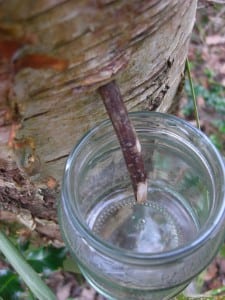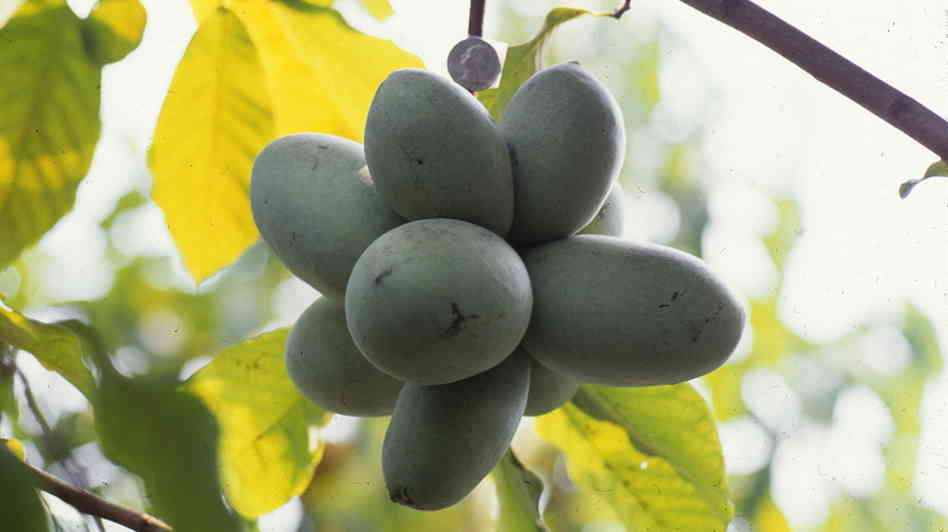Trees are an incredible resource for the outdoor survivalist. Their uses are numerous, and include some of the following:
- Water / Sap
- Water indicators
- Animal indicators / trapping
- Food
- Cordage or glue
- Shelter
- Fire
- And more!
This article will not cover tree identification. Rather, it focuses on some of the uses of trees. Two very good tree identification books I use are BARK – A field guide to trees of the North East (great for identification without leaves) and Audubon Society Field Guide to North American Trees: Eastern Region. In any case, ensure positive identification before attempting to use any tree as a food source.
Water / Sap
In late winter / early spring, maples and birch can be tapped for their water/sap. Additionally, local wild grape vines when cut can provide you with water. There are essential vitamins and nutrients in the water, and it does not require any processing or other purification. Please note that it should be consumed within 1-2 days as transient bacteria from the environment can start to grow. Simply drive a V shaped notch into the tree and the water will start flowing. You can drive a small stick into the notch to have water drip down into your collection vessel. Over a couple of hours, you can get almost a whole canteen of water!
Water Indicators
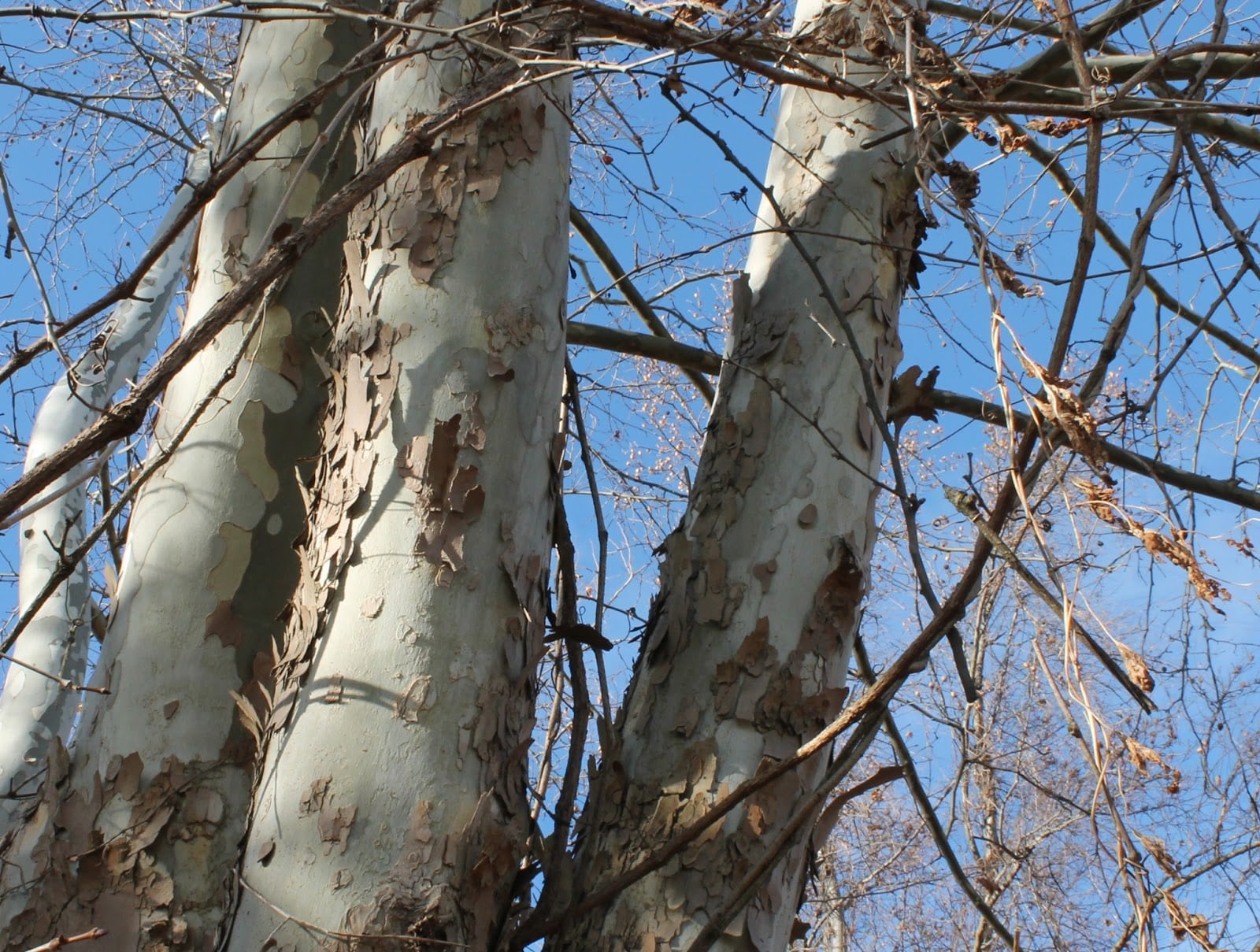
There are many trees that can be used to find ground water. Although you may have some of these trees show up in areas that are not water saturated, odds are if you find groves of the same species, there is a good chance of ground water lurking. Although we won’t cover all plants and trees that give clues to water sourcing, we will cover some of the trees that are easy to spot at a distance. Three of these are Sycamores, Birch and Willows. Note that I’ve only had success tapping birch and maples as described above. Other than trees, simply follow the terrain downwards into low valleys and explore for water.
Source: Plants as indicators of ground water
Animal Indicators
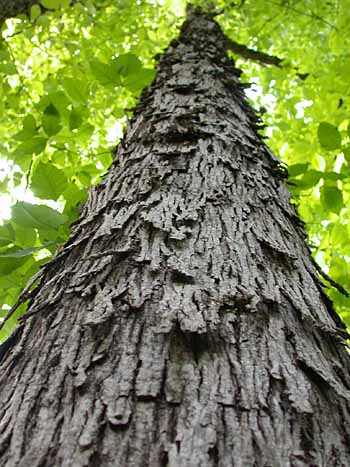 If you’re looking to hunt or snare squirrels or other nut eating animals, try spotting trees from which they feed. I’ve found that Shellbark or Shagbark Hickory trees are loved by squirrels. You can also find them around Walnut (black) trees and Oak (white primarily, then red) trees. If you are snaring them, set up a simple lean pole with snares lined up the ramp. The squirrels will prefer the angled rather than vertical climb.
If you’re looking to hunt or snare squirrels or other nut eating animals, try spotting trees from which they feed. I’ve found that Shellbark or Shagbark Hickory trees are loved by squirrels. You can also find them around Walnut (black) trees and Oak (white primarily, then red) trees. If you are snaring them, set up a simple lean pole with snares lined up the ramp. The squirrels will prefer the angled rather than vertical climb.
Food
There are multiple food uses for trees, many of which cannot be covered holistically here. However, here are a couple common ones. Spring to summer yields several fruit bearing trees such as Mulberry, wild crab apples, and June Berry (Service Berry). In the fall, Black (or other) walnuts, acorns, and shellbark/shagbark hickory trees, Paw Paws and Smooth or Staghorn Sumac are great candidates.
Foliage can be eaten on some trees as well (either directly or in teas). Here’s some you can get started learning:
- Rosebud trees have delicious edible flowers in the springtime.
- Sassafras was originally used to flavor root beer! Crushed leaves or surface roots can be ground down as a spice to flavor your dish.
- White pine needles can be boiled into a tea for vitamin C
- Young basswood leaves have a slight sweet taste and are very palatable. As the leaves grow older, they become less palatable, so stick with the smaller/younger leaves.
- The inner bark of pine trees is edible too! I’ve eaten inner pine bark and it is not bad at all. Some folks think eating bark is a last ditch survival tactic, however there is documented evidence that Native Americans ate it routinely.
Cordage & Glue
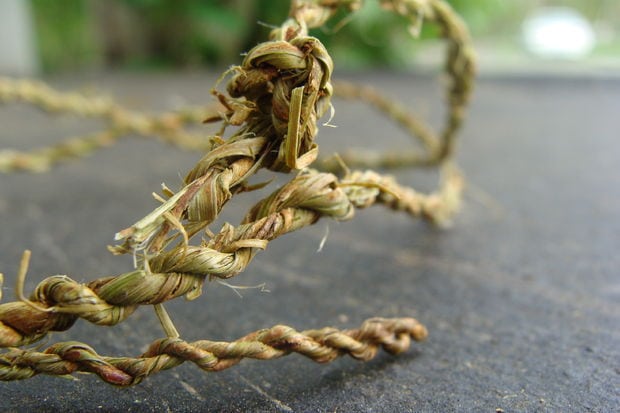 Several trees are great for cordage. Some require using the reverse wrap to make the cordage while others can be used directly. One of the most common trees/shrubs you’ll find that can be used for cordage is the invasive honeysuckle. Simply cut two horizontal lines across the stem/trunk at a length appropriate for your cordage needs. Cut vertical lines between the horizontal ones you made and start peeling away the inner bark. This bark can be reversed wrap together and is very strong. Since this is a terribly invasive species, taking the bark and potentially killing the tree is less concerning. Other trees or plants that you can use directly for cordage are willow stems, grape vines, or small surface roots like spruce.
Several trees are great for cordage. Some require using the reverse wrap to make the cordage while others can be used directly. One of the most common trees/shrubs you’ll find that can be used for cordage is the invasive honeysuckle. Simply cut two horizontal lines across the stem/trunk at a length appropriate for your cordage needs. Cut vertical lines between the horizontal ones you made and start peeling away the inner bark. This bark can be reversed wrap together and is very strong. Since this is a terribly invasive species, taking the bark and potentially killing the tree is less concerning. Other trees or plants that you can use directly for cordage are willow stems, grape vines, or small surface roots like spruce.
Waterproof glue can be made from a simple combination of charcoal and melted pine resin. Our friends at MCQ Bushcraft have a nice video on making pine glue for a birch bark container. Also another use for trees!
Shelter
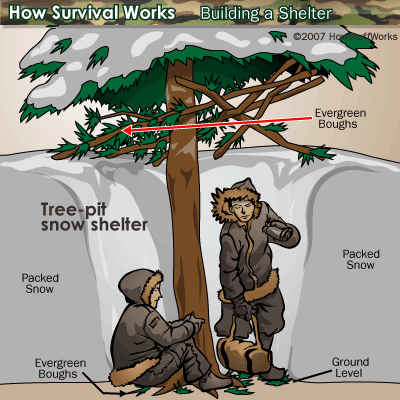 Aside from using the wood from trees as a shelter structure, trees by themselves can offer a good shelter resource. Particularly, the under story of conifer trees can be used as a snow shelter (if there is enough snow). Even if there is not sufficient snow, the dense needle structures provide relatively good protection from snow and rain.
Aside from using the wood from trees as a shelter structure, trees by themselves can offer a good shelter resource. Particularly, the under story of conifer trees can be used as a snow shelter (if there is enough snow). Even if there is not sufficient snow, the dense needle structures provide relatively good protection from snow and rain.
Fire
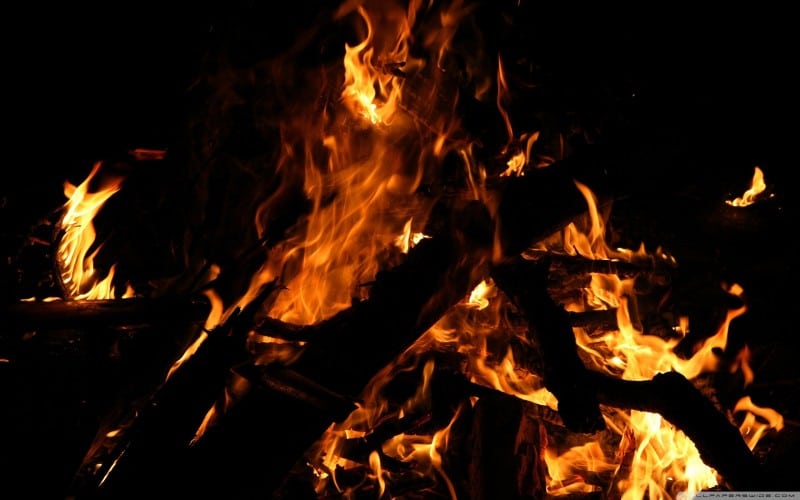 Throughout my first learnings on making fire by hand, I came to realize that sites focus more on the technique than wood choice. For the beginner, wood choice for friction fires is the critical factor in determining whether you pass or fail. The key is to find some low resin soft woods in order to more easily generate an amber. In terms of the Midwest, Basswood, Cottonwood, and general popular species are good softwoods to start out with. If you are unsure, simply press your fingernail into the inner core of a sliced stick. If your nail easily makes an indent into the wood, it should be soft enough for a friction fire. As you gain experience and technique, you can start using other types of wood, different wood combinations, and friction fire styles.
Throughout my first learnings on making fire by hand, I came to realize that sites focus more on the technique than wood choice. For the beginner, wood choice for friction fires is the critical factor in determining whether you pass or fail. The key is to find some low resin soft woods in order to more easily generate an amber. In terms of the Midwest, Basswood, Cottonwood, and general popular species are good softwoods to start out with. If you are unsure, simply press your fingernail into the inner core of a sliced stick. If your nail easily makes an indent into the wood, it should be soft enough for a friction fire. As you gain experience and technique, you can start using other types of wood, different wood combinations, and friction fire styles.


